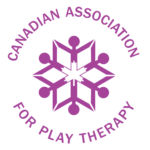Play Therapy History, Models and Process May 6-7
Overview:
This two-day course will begin with a review of the major theories that constitute the frameworks for the major models of play therapy, particularly the psychoanalytic influences in the early part of the twentieth century, the person-centered work in the middle and the didactic theories that have been developed in the latter part of the 20th century and the beginning of the 21st century. The history of play therapy will be carefully presented so as to observe the evolution of this method of child intervention, allowing the members of the class to participate with case vignettes and small group discussions. The play therapy process will be examined with a particular focus on understanding basic themes by observing a play therapy puppet show, discovering and sharing these themes in small groups and learning how to record themes. Particular attention will be placed on how to respond to child client’s need for pacing of emotional content. Selected research studies supporting the effectiveness of play therapy will also be presented, thereby being aware of the attention to current efficacy based research, qualitative studies and the need for future studies.
Learning Outcomes:
1) You will be able to identify the different stages in the development of the field of play therapy.
2) You will be able to identify the different major theoretical models of play therapy and their theorists.
3) You will be able to describe the role of the play therapist, and key features in each of the different theoretical models of play therapy.
4) You will be able to evaluate the effectiveness of each major theoretical model with different populations based on empirical support in the scientific literature.
5) You will have an opportunity to practice matching a theoretical model of play therapy to different case scenarios.
6) You will practice identifying of the different stages of play therapy and be able to identify what key factors differentiate the different stages of play therapy.
7) You will practice identifying different play therapy themes and learn how to record those themes in your session notes.
8) You will be able to describe some of the current trends in play therapy research.
9) You will be able to describe some of the diverse ways in which play therapy is currently being practiced.
10) You will be able to identify where to locate current research in the field of play therapy.


Play Therapy History, Models and Process May 6-7
Overview:
This two-day course will begin with a review of the major theories that constitute the frameworks for the major models of play therapy, particularly the psychoanalytic influences in the early part of the twentieth century, the person-centered work in the middle and the didactic theories that have been developed in the latter part of the 20th century and the beginning of the 21st century. The history of play therapy will be carefully presented so as to observe the evolution of this method of child intervention, allowing the members of the class to participate with case vignettes and small group discussions. The play therapy process will be examined with a particular focus on understanding basic themes by observing a play therapy puppet show, discovering and sharing these themes in small groups and learning how to record themes. Particular attention will be placed on how to respond to child client’s need for pacing of emotional content. Selected research studies supporting the effectiveness of play therapy will also be presented, thereby being aware of the attention to current efficacy based research, qualitative studies and the need for future studies.
Learning Outcomes:
1) You will be able to identify the different stages in the development of the field of play therapy.
2) You will be able to identify the different major theoretical models of play therapy and their theorists.
3) You will be able to describe the role of the play therapist, and key features in each of the different theoretical models of play therapy.
4) You will be able to evaluate the effectiveness of each major theoretical model with different populations based on empirical support in the scientific literature.
5) You will have an opportunity to practice matching a theoretical model of play therapy to different case scenarios.
6) You will practice identifying of the different stages of play therapy and be able to identify what key factors differentiate the different stages of play therapy.
7) You will practice identifying different play therapy themes and learn how to record those themes in your session notes.
8) You will be able to describe some of the current trends in play therapy research.
9) You will be able to describe some of the diverse ways in which play therapy is currently being practiced.
10) You will be able to identify where to locate current research in the field of play therapy.
